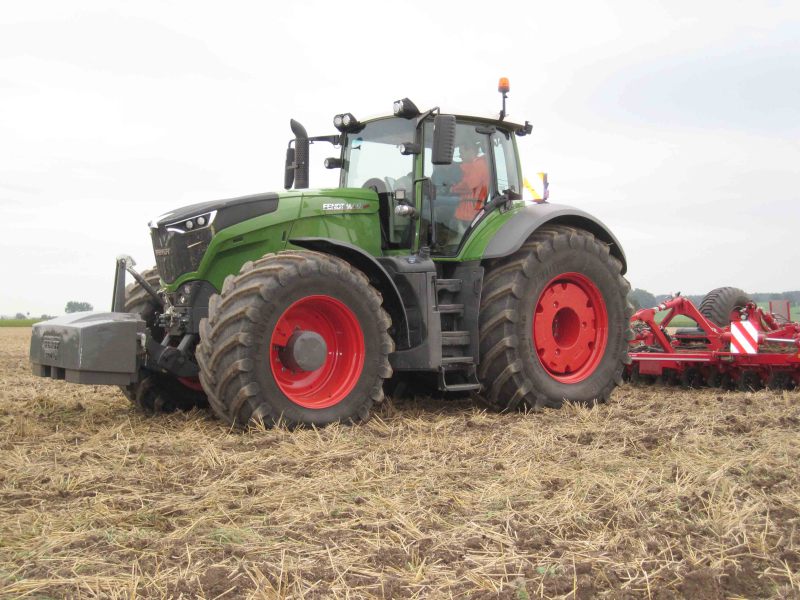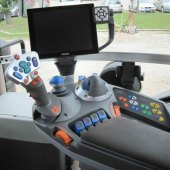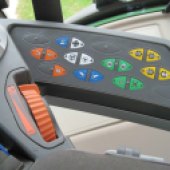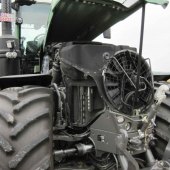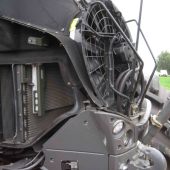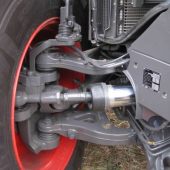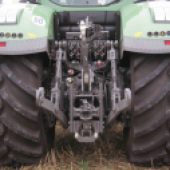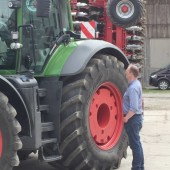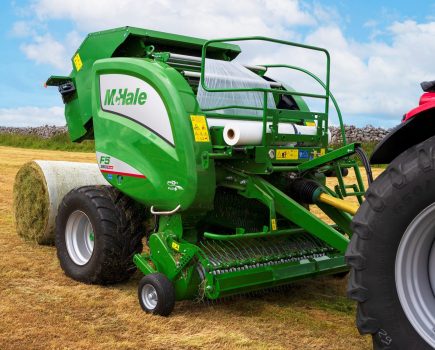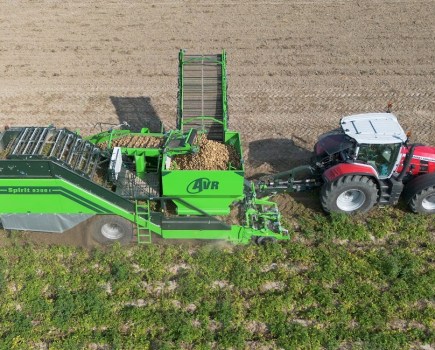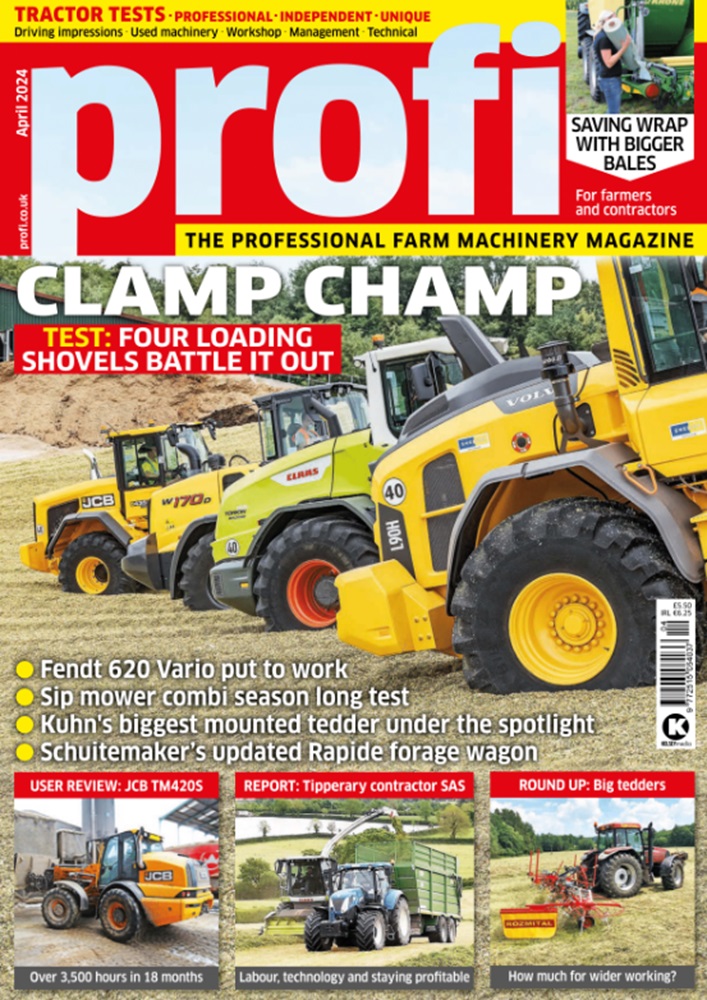Flexing its bulging biceps and bristling with new technology, the 400-500hp Fendt 1000 Vario tractor line goes on sale in November and should start to appear on UK farms in mid-2016. Likely buyers are those farms seeking a more powerful wheeled tractor but who want to avoid heading down the articulated route. As such, Fendt reckons its 1000 Vario fills a gap in the market in offering a 368kW/500hp max output from a tractor that can be ballasted up from 14t (for top work) to 21t (for heavy draft applications) and still measures less than 3.0m in overall width. In comparison, the Case IH Magnum and Deere 8R conventional, wheeled tractor families top out at around 420hp. The core specification of the four Fendt 1000-series models (1038 280kW/380hp, 1042 309kW/420hp, 1046 338kW/460hp and 1050 368kW/500hp — all max output, ECER24) was outlined last autumn, but at a recent preview event the tractor maker added more flesh detail to those initial spec bones. Here we run through the stand-out features, and a more detailed driving impression will follow in an upcoming magazine. Engine A fundamental part of what Fendt terms its ProDrive high torque/low speed system for the 1000 Vario is the firm’s choice of engine — a 12.4-litre six-cyl MAN rather than the 7.8-litre Deutz of Fendt’s smaller 900 Vario tractors. Rated speed is 1,700rpm, as against the 900’s 2,100rpm, with max torque available from 1,100 to 1,500rpm. On the road this allows a max travel speed of 60km/hr at 1,450rpm, 50km/hr at 1,200rpm and 40km/hr at what amounts to tickover (950rpm). Though the base engine is similar to a truck motor, it has been redesigned by Fendt and MAN for use in a tractor as a structural unit; in other words, it doesn’t require a chassis or part-chassis. As well as the low revving nature of the MAN motor there’s also a new hydraulically driven cooling fan located in front of rather than behind the rad — the so-called CAS (concentric air system), which pushes air through the rad. The fan’s drive, location and tilted angle are reckoned to result in a 25-70% efficiency improvement and, to give some figures, it uses just 6kW at full power in 25°C conditions, whereas a more conventional fan system draws around 18kW. All of the above enable the 1000 Vario to meet Stage IV emissions regs with just SCR (selective catalytic reduction) and EGR (exhaust gas recirculation), but without having to install a DOC (diesel oxidation catalyst) or DPF (diesel particulate filter). On engine choice, did Fendt consider going for one of its parent company’s own AGCO Power units? Yes. But the seven-cyl and V12 were too big, the six-cyl too small. Hence the final decision to plump for the MAN. VarioDrive transmission
When working on the new engine, Fendt also developed a new transmission to accompany it. The TA 400 Vario still comprises one pump and two hydro motors, with the key VarioDrive difference being that one of these motors is now wholly dedicated to the front axle and the other to the rear axle. The only link between the two axles is through a 4WD clutch, which acts as an inter-axle differential and enables traction to be automatically and continuously transferred between the two axles according to need. Interestingly, the drive to the front axle drops out at speeds over 25km/hr when there is no load, again aimed at reducing losses and improving efficiency. What does this mean for the driver in the cab? In terms of control, he still works with the familiar Vario joystick, but there are two notable absentees on the armrest keypad — no 4WD engage/disengage button (it’s all automatic) and no travel range I/II button. Hydraulics
There’s a choice of three different hydraulic packages — 169 litres/min, 228 litres/min and 430 litres/min — with the top-spec option comprising two load-sensing pumps and separate circuits. The first pump supplies 220 litres/min, the second 210 litres/min. Hydraulic oil change intervals are extended to 2,000 hours or two years, and there’s the option to fit up to six rear remotes and one up front. Grip Assistant Working in conjunction with Fendt’s VarioGrip central tyre inflation system, the optional Grip Assistant provides recommended tyre pressure settings depending on the application. All the operator has to do is tap into the Varioterminal whether the implement is mounted or trailed, the working conditions, the type of implement, the tyre sizes and the travel speed — and then up pop the suggested front/rear ballast weights and front/rear tyre pressures. Cab
The 1000 Vario cab might look the same as on the 900, yet there are differences. The entry area between front pillar and mudguard is 85mm wider, the glazed area is up by 8% and there’s a new four-point suspension system. Other items include an improved air con package, new seats and an optional auto handbrake. Moving to the outside, there’s certainly no shortage of illumination: work lights in the bonnet, in the roof, on the pillars, standard and auxiliary headlights, contour lights integrated in the mirrors, LED running lamps. And there’s even the option of car-like headlamp levelling. Tyres
Given the power on offer it will come as no surprise to learn that Fendt is providing the 1000 Vario with new footwear — in short, a couple of 46in rear rim options. Buyers can pick from either a 750/75R46 or 900/65R46, and even the smaller one of these two delivers around a 14% increase in contact area when compared with a more standard 710/75R42. For further 1000 Vario details, look out for a driving impression in an upcoming issue of profi.

